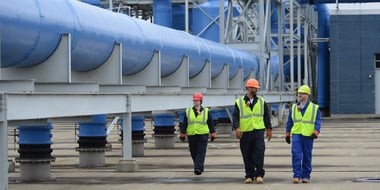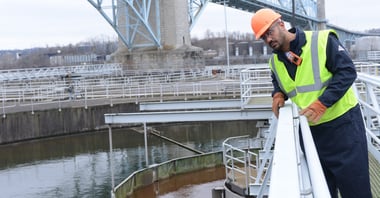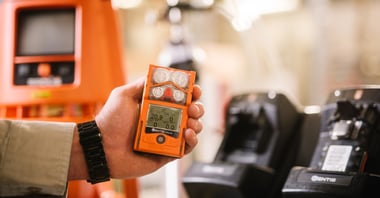In the chemical industry, safety touches every member of the workflow. Whether you’re in the field, a contractor, or a specialized safety professional, you must be aware of potential gas hazards on the job. By working together with members of your team and other teams, you can share information that creates a more thorough picture of on-the-job issues. This is crucial no matter where your responsibilities fall in the process. This article discusses gas detection for chemical plants and how it can keep workers safe.
Is Gas Detection for Chemical Plants Really That Important?
You may encounter many different types of gas hazards at a chemical plant. Inside a plant, workers can be exposed to any number of gases: LEL, O2, NH3, CO, CL2, H2, HCL, H2S, NO, NO2, PH3, and SO2. A PID sensor checks volatile organic compounds (VOCs) prior to tank entry. Workers may use general four-gas monitors or other sensors, depending on what gas hazards may be present at the time.
It's important to consider the safety of people on your site. It's also important to keep in mind the community around your chemical facility. During an unplanned chemical release, you need to know what gases are being released and where. Nearby communities could be in danger if they are exposed to hazards from your plant.
What Equipment Can Help with Gas Detection?
Whether you’re inside or outside of a chemical plant, the right gas detection equipment can help maintain a safe environment. Gas monitors are the foundation for staying safe, because they provide the data that connects you to other workers. Ventis® Pro5 personal monitors and Radius® BZ1 Area Monitors can connect to the cloud, allowing communication that keeps workers safe. When one of these gas monitors detects a hazard, an alarm goes off on the monitor itself. Connected monitors in the area receive an alert, so everyone knows when gas hazards could threaten safety. This gives on-site workers a warning of changing site conditions, allowing them to respond to the situation quickly and carefully. At the same time, workers in a control room receive real-time alerts via text and email.
USING GAS DETECTION DATA TO IMPROVE SAFETY IN CHEMICAL PLANTS
At a chemical plant, you may be expected to record various gas detection data. This data might include low and high alarms, short-term exposure limits (STEL), time-weighted averages (TWA), time spent in alarm, areas where the most alarms are occurring, peak levels, and the times when alarms occur. Collecting this data from gas detectors allows safety supervisors and other workers to “see” their environment through the information collected.
Recording and understanding this gas detection data is important to an effective workflow. Staff members in every area of the chemical plant benefit from the knowledge that this data provides. Field workers and contractors benefit because this information allows the safety team to make more informed decisions. The safety team benefits for the same reason – they have more knowledge of what is happening and when. This team is also able to collect data to provide better resources (such as PPE or training) to workers on the job, and they can also assess the need for processes improvement or decide whether something at the facility needs addressed. With field workers doing the job and the safety team staying informed, they are able to function together to make the best decisions to improve safety.
Not only can data collection lead to process or training improvements, it can also point out issues within the facility. This is especially true if workers are noticing alarms in unusual places or history of high concentrations in specific areas. Safety and maintenance personnel can use the data to identify and prioritize plant maintenance projects that will improve safety for workers.
CREATING A SAFE ENVIRONMENT WITH GAS DETECTION
Safety precautions and data collection pair together to create an enhanced work environment. Changes may come in the form of more informed decisions, better or new equipment, process improvements, or training implementation for workers. A more secure work environment means safety for all those involved – on the job and in the community.
In the chemical industry, it’s not enough to give a worker a basic monitor and send them out to do the job. Everyone benefits from added layers of protection through data collection. When it comes to gas detection for chemical plants, more comprehensive data gives workers visibility into gas hazards on site, creating a safer environment on the job.



